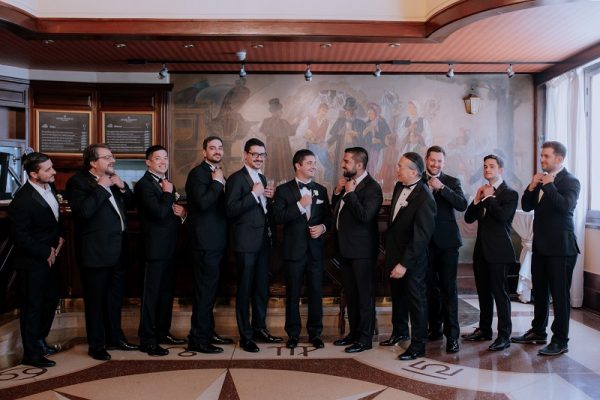Lately a lot of people have asked me what it means to go by “etiqueta”. It is not the first time that I have been asked if they have to wear a short or long dress at a certain wedding, if they have to wear a headdress or not, if a tie is mandatory, if they can wear black… Luckily, this attire issue it is not as strict a matter as it was before, however, it is respectful to follow the code established at a wedding, if that is what your hosts want and express it in the invitation.
In broad terms, and with the help of Anglo-Saxon terminology, the different expressions that define the dress code would be::
- White tie or strict “etiqueta”: the most formal thing you can imagine, tailcoat, white shirt and white bow tie for men; long dress, high heels and hair tied for women.
- Black tie or “etiqueta”: something less formal, tuxedo or dark suit with black bow tie and long or cocktail dress.
- Black tie optional or “cocktail”: dark suit with tie and elegant dress or cocktail attire.
- Creative Black tie or fun “cocktail”: the same as the previous one but a little more fun, adding, for example, socks or a funny tie, XXL jewelery or a striking bag.
- Semiformal: as its name indicates an intermediate between formal and informal, you can go without a tie and with more daring looks.
- Casual: the typical of baptisms and communions, chino pants with a shirt and jacket, and more informal dresses or attire with flat shoes.
- Traditional: according to some culture as is the case of Indian sarees or Scottish tartans, for example.
- Custom: personalized outfits for the occasion, such as “Beach wedding”, “Country wedding”, “20s wedding”, “Blue wedding”, and a very long etcetera.
If you still do not have clear ideas, it is always best to ask the couple in question. They will surely clear your doubts!


